More than a year after the burnt remains of eight miners were discovered at Lindo Creek, the murder of gold dealer Dweive Kant Ramdass allegedly by three members of the Coast Guard has once again raised questions about whether soldiers could have participated in the mining camp massacre and the trail of unexplored clues left behind.

More specifically, there were at least two alleged direct links of soldiers to the mining site. In one instance, a soldier and his family members were found using a SIM card that one of the miners had on his person at the time of his death. In the other, a former member of the army was overheard discussing that the miners were about to have a ‘wash down’.
The police had launched an investigation into the miner’s SIM card being in use but after reporting that they had arrested and released three persons there has been no further information on that investigation.
The force has said repeatedly that ballistics tests done on guns found in the possession of dead bandits — including Rondell ‘Fineman’ Rawlins and Jermaine ‘Skinny’ Charles — matched bullets found at Lindo Creek.
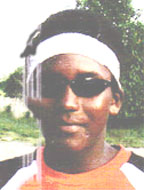
Up to recently, Crime Chief Seelall Persaud had said that the force’s investigation had “definitively” concluded that Rawlins and his gang were responsible for the crime. However, questions still linger and there have been repeated calls for a thorough investigation with international help.
The only international help received so far came from Trinidadian police, who visited the site and later reported that their findings correlated with the Guyana Police Force; and from Jamaican forensic experts, who are yet to return results for DNA samples taken from family members more than a year ago.
Clifton Wong, Nigel Torres, Cecil Arokium, Compton Speirs, Bonny Harry, Horace Drakes, Dax Arokium and Lancelot Lee were slaughtered at the Lindo Creek mine and their remains burnt, possibly around June 9-10. Owner of the mine, Leonard Arokium made the discovery on June 21.

There was evidence of how one of the miners had died. This newspaper was informed that one of the skulls found at the location had an impression suggesting that the person had been beaten in the head.
Leonard Arokium has repeatedly said that he believed the heinous crime was committed by members of the joint services. He had said he believed the men were killed and then the camp was robbed as there was evidence that a `wash down’ was done.
Days after Arokium made the allegations the police reported that ballistics tests on the spent shells discovered at the Lindo Creek mine matched one of the weapons recovered by the security forces from Cecil Ramcharran called ‘Uncle Willie’ and Robin Chung called ‘Chung Boy’ who were slain at Goat Farm during a confrontation with lawmen.
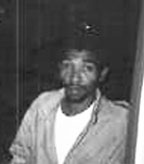
Commissioner of Police Henry Greene had also told the media that the police had an eyewitness to the crime who not only saw `Fineman’ and his gang kill the men but also observed them cooking and eating a meal at the mining camp. Later, the police issued a release stating that they had a suspect in the Lindo Creek massacre. A few days after the release was issued, Greene, speaking to reporters, had indicated that the eyewitness and the suspect are one and the same and had hinted that the person may be used as a state witness. More than a year later there has been no word on this suspect/eyewitness.
‘Wash down’
Days before the eight miners were slaughtered, one of those killed, a former member of the army was said to have been overheard telling serving joint services members that the miners were expected to do a “wash down”, well-placed source had told this newspaper.
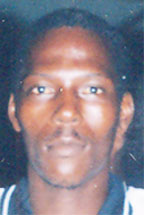
A ‘wash down’ means the miners were expected to go through a process that would have sorted the diamonds that they had found. Information had revealed that the ex-army rank was speaking to a serving member of the force, who was known to him, at the Kwakwani Water Front.
After the miners were killed, some time towards the middle of June, their bodies and belongings were burnt and no trace of diamonds was found although it was clear that they had completed a `wash down’.
It was argued that it would not have been difficult for the army to ascertain when the ex-rank served in the force and who from his batch would have been in the area around the time the crime was committed.
It was suggested that the particular serving member should be questioned extensively but there was no follow-up.
It was also suggested that investigators should interview the residents of the area as more than one of them overheard the `wash down’ conversation.
‘Soldier man lef he phone home’
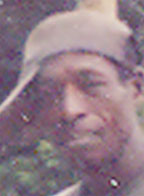
And even before that lead cooled reports of one of the dead miners’ cellular phone being in use surfaced but while the police reported to have launched an investigation they have not publicly said what their findings were.
“Please put $200 in my phone, baby,” was the message a female friend of Dax Arokium received on July 4, weeks after it was surmised that he and seven other miners were killed at Lindo Creek.
That number was 592-674-9643.
It was believed that the text was sent by Dax but he lost signal before it was transmitted. When the cell phone was activated in a signal area again, the text, which would have been pending was automatically transmitted and to the young woman’s cell phone.
When she dialled the number someone answered saying, “Soldier man ent deh and he lef he phone home,” and hung up. However, someone called her back immediately afterwards and asked her who she was trying to get in contact with. The woman informed the person that she had received a text from the number and she wanted to know who had sent it.
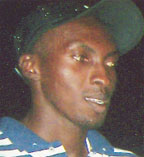
The woman was then told that the phone belonged to a soldier but he was not around. Soon after, that woman had reported, another voice was heard on the phone, which sounded like a child’s. This person said he had found the phone in an alleyway in Christianburg, Linden. But even before the child had finished speaking, she said, a woman took the phone and attempted to explain where her “nephew” had found it.
Dax’s friend said she had explained that the cell phone belonged to someone she knew and the woman then asked her if she wanted the phone. She was then told that when the woman’s nephew found the phone it was “battered” and two of the buttons were missing, but he decided to remove the SIM card and use it.

“I ask her why he would do that, because when people find phone they don’t use the SIM they take that out and throw it away and use the phone. But she couldn’t answer she just ask me if I want the phone I tell she yes and she say ‘hold on.’ I hold on for a while and then she come on back and say she nephew say he throw away the phone and he ent know where he throw it,” the woman had told Stabroek News.
That was the last time the young woman made contact with anyone on the phone. However, Dax’s relatives, including his father, had been alerted.
The man’s relatives had said they were convinced the phone was on his person at the time of his death as he had called a friend from Kwakwani on June 5 or 6, just before he went into the backdam.
A list of recorded calls made from the cellular phone, which this newspaper had seen, had reflected that some 72 calls were made to cell phones as well as landline numbers, particularly in the Linden area, in August last year, two months after the Lindo Creek incident.
The police had said they arrested three persons who might have knowledge “of a cell phone with a SIM card of a similar number” and they were being questioned. There was no further information from the police on this.
Dax’s phone was not the only one in use after he died. Relatives of Bonny Harry had also reported that his phone, which was on his person at the time of his death, was also in use. One of his brothers had said he had dialled the number and a man claiming to be a Brazilian had answered. An investigation was also said to have been launched into this report.
‘Big fire’
Reports had also surfaced that a member of the army who was in the army helicopter that was flying over the area, following the June 6 discovery of Fineman and his gang at Christmas Falls had reported that he had seen fire in the area.
The officer reportedly told his colleagues what he had seen that night, but by then it was too late to investigate.
Courtney Wong, who had taken the lawmen to the area following Arokium’s discovery, had reported that while at the camp he had heard a conversation between some soldiers which suggested that they might have noticed a fire in the area on June 10.
According to him, one of them had said, “‘You could remember when we fly over and we see this big fire.’ One soldier was talking to another soldier and he was saying this is probably where the fire came from. I think it was three of them… I don’t think if they come in front of me I would recognize them because I wasn’t paying much attention,” the man had said.
At that time Arokium had said if someone was looking for bandits and a fire was seen, it was something that should have been investigated.
“They don’t got bush fire in that area,” he had observed.
When this was put to a senior officer in the army it was reported that an investigation had been launched which included the questioning of the ranks who would have flown into the area along with Wong and it was ascertained that no such conversation had taken place.
With all of these uninvestigated links to the mining camp and its occupants, the question of who was responsible for the deaths of the miners remains unanswered.





